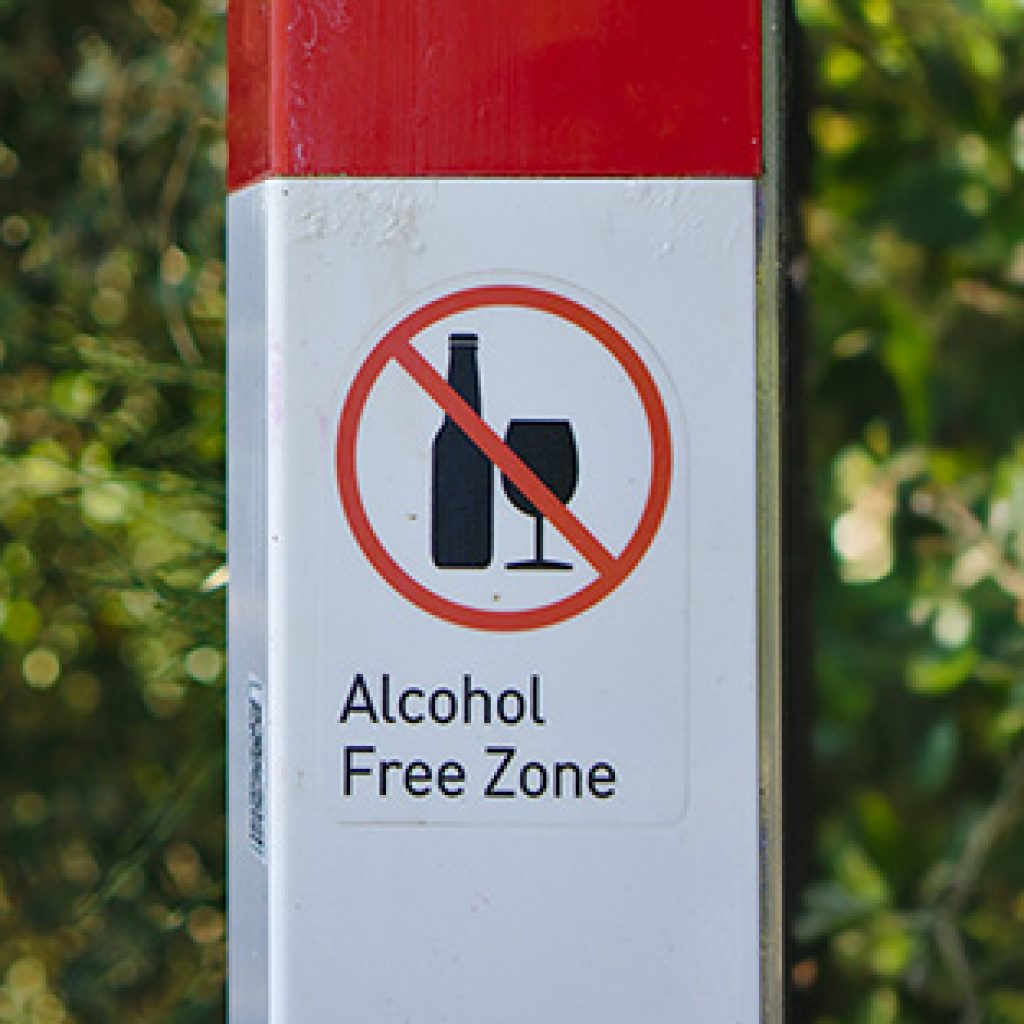Leveling The Playing Field: The Importance of Addressing Health Disparities in Recovery
What Are Health Disparities?
A health disparity is a type of health difference that is closely linked with social, economic, and/or environmental disadvantage (Office of Disease Prevention and Health Promotion, 2020). Disparities can occur by race/ethnicity, socioeconomic status, age, location, gender, disability, and sexual orientation. The National Institute on Alcohol Abuse and Alcoholism (NIAAA) defines special emphasis populations as “groups who face particular risks from drinking alcohol based on personal characteristics such as age or gender” (NIAAA, 2020).
Special emphasis populations recognized by NIAAA include:
Underage youth – due to the ongoing risks of underage drinking and the illegality of the practice.
Emerging adults (ages 18 to 28) – due to this population having the highest risk for alcohol ad drug use problems of any age group (Wagner et al., 2020).
Older adults (age 65 and older) – due to age-related increased sensitivity to alcohol, Having health problems which are often adversely affected by use of alcohol, and often taking medications that are subject to negative consequences when taken with alcohol (NIAAA, 2020). Older adults also have unique risks for substance use disorder related to aging, including worry about health concerns, boredom, loss of friends and loved ones, shame, and the belief that their alcohol use does not harm anyone else.
Women – due to having higher risks than men related to consuming alcohol, such as liver damage, heart diseases, brain damage, and breast cancer; for whom issues of pregnancy and fetal alcohol exposure are unique; and who have high rates of trauma, abuse, and rape (NIAAA, 2020; Covington, 2002).
Individuals experiencing co-occurring disorders – due to the complexities of treating multiple disorders along with substance use disorders, poly-drug use, and often greater problem severity (NIAAA, 2020).
And ethnic and racial minorities (specifically Hispanics/Latinx, Blacks, and Native Americans) – due to being underserved, experiencing more negative consequences of illness and death than other populations, experiencing greater economic hardship, stress, systemic discrimination, while having fewer available recovery resources.
The United States population is estimated at 331, 893, 745 million people.
Key stats for special populations include:
These disparities are more easily understood when looking at the data that drove the initial Healthy People 2020 program. The Office of Disease Prevention and Health Promotion (ODPHP), National Center for Health Statistics (NCHS) and the Office of Minority Health (OMH) released a new HealthyPeople.gov data search function.
This Health Disparities widget is a new way for you to access information regarding health disparities.
The widget provides charts and graphs of disparities data at your fingertips. You can easily search by:
- Disparity type – including disability, education, income, location, race and ethnicity, and sex)
- Leading Health Indicator
How Are Populations Impacted by Health Disparities?
Because disparities can occur in such a broad spectrum of areas, the negative impact can be severe. Areas impacted include access to healthcare insurance coverage, access to care itself, and access to quality car. The disparities for impacted groups are not explained by differences in health needs, patient preferences, or treatment recommendations and are often connected to social, economic, or environmental disadvantage linked to Social Determinants of Health (KKF, 2020). Other elements that impact health and healthcare disparities are socioeconomic status, language, citizenship status, sexual identity and orientation, immigration status, and length of time in the country (KFF, 2020).
Some populations also contain subgroups with multiple disadvantages that are at even greater risk of health and healthcare disparities. The impact of COVID-19 is one example. According to one compilation of case studies from 13 countries around the globe, the pandemic is disproportionately affecting the poor, minorities, and other vulnerable populations (Shadmi et al., 2020).
In a recent presentation for the Addiction Technology Transfer Center (ATTC) Network, the following impacts of behavioral health disparities on racial and ethnic communities were listed:
- 41.8% of African American (89,000) Young Adults with SMI received treatment, 58.2% received no treatment. Stigma and discrimination precludes the need to seek help.
- Black patients are 77% are less likely to be prescribed buprenorphine and more likely to receive methadone treatment.
- 1 in 10 Hispanics with a mental disorder, use mental health services from a general health care provider, 1 in 20 receive such services from a mental health specialist.
- SAMHSA reports that 91% of Hispanic Americans with a substance use disorder are unable to receive the treatment that they need at a specialty facility (such as substance use disorder treatment centers)
- Of American and Alaskan Native populations, 1 in 11 dealt with substance use, 22% with mental illness, and 5.3% had co-occurring disorders.
Why Is It Important to Address The Needs Of Special Emphasis Populations In Recovery?
In a recent Alcohol Research Current Reviews issue, the authors noted that “Despite widespread common usage of the term “recovery,” obtaining expert consensus on the essential elements for defining recovery from AUD has proved challenging” (Wagner & Baldwin, 2020). The authors cite the Substance Abuse and Mental Health Services Administration (SAMHSA) definition of recovery as “a process of change through which individuals improve their health and wellness, live a self-directed life, and strive to reach their full potential” while also referring to the Betty Ford Institute Consensus Panel definition of “a voluntarily maintained lifestyle” characterized by sobriety (abstinence from alcohol and nonprescribed drugs), personal health (improved quality of personal life), and citizenship (respect for others). Definitions by William White and other authors were also cited. Among the definitions of recovery by Kaskutas and colleagues were three common factors (1) “abstinence” (no use of alcohol); (2) “essential recovery” (being honest with oneself, handling negative feelings without drinking or using, enjoying life without drinking or using); and (3) “enriched recovery” (ongoing growth and development, reacting to life in a more balanced way, taking responsibility) “(Kaskutas et al., 2014). In order to meet the challenges of recovery, minority and special emphasis populations by definition have limited economic and social capital both before and during recovery (Wagner & Baldwin, 2020). Some of the disadvantages which challenge their success in recovery include the following key social determinants:
- Material hardship
- Residential segregation
- Neighborhood crime and disorder
- Alcohol access through nearby alcohol outlets including bars and liquor stores
- Stigma about having problems with alcohol use or having AUD
- Unfair treatment, prejudice, and discrimination
- Disparities in medical care, resulting in more untreated or undertreated
- Medical conditions
- Housing instability
- Unemployment and underemployment
- Personal demoralization
- Lack of culturally and linguistically appropriate recovery support services nearby
- Stress, from multiple and interacting sources
These inequities result in successful recovery for special emphasis populations being less likely for special emphasis populations than for those who are not subject to the same life context (Wagner & Baldwin, 2020). The authors conclude that rigorous empirical studies of recovery from alcohol use disorder by minority populations are needed to move forward with correcting existing inequities.
For Health Equity and Cultural Competence Resources visit the CASAT OnDemand Resources & Downloads page of our website.
For Training in Health Equity and Cultural Competence join CASAT Learning for a LIVE WEBINAR:
Moving Beyond Cultural Competence to Cultural Intelligence
August 9, 2022, from 9:00 am – 11: 30 am
This training will provide participants a learning opportunity to move forward with the understanding of Equity and Diversity Inclusion work. Most have had training and learning opportunities in “Cultural Competence,” however, there continue to be struggles and issues finding the best ways to connect and treat our client populations. During this training, participants will work through cultural dynamics and advance our work.
Learning Objectives:
- Attendees will understand strategies and approaches to improve their ability to connect and serve clients with different backgrounds.
- Attendees will understand their own experience and make personal and professional adjustments and adaptability.
- Attendees will discuss what institutional strategies should be promoted for lower burnout rates, compassion fatigue, and secondary traumatic stress.
- Attendees will understand the importance of incorporating sustainability techniques to maintain a high level of engagement and maintain productivity
Presented by: Brandon Jones, M.A.
Continuing Education Units: 2.5 CEUs
More Health Equity and Cultural Competence Resources:
For more blog posts about how to help those in recovery,
check out these Catalyst blog posts in our archives:
- 15 Important Steps for Creating Behavioral Health Equity
- The “COVID-19 Effect” on Substance Use and Mental Health Disorders
- National Recovery Month: Supporting Sustained, Long-term Recovery – Updated for 2020!
- Telehealth: A Technology Whose Time Has Come
- Older Adults and Substance Use Disorder: How Can Family, Friends and Providers Help?
- Cultural and Linguistic Competence: A resource Review for Behavioral Health Providers
- Collegiate Recovery Communities: Valuable and Successful
- What the Latest Research Says about Recovery, Stigma, and the Language We Use
- Six Reasons to Support National Minority Mental Health Month
What topics would you like to see the latest research for? Please list your suggestions in the comments below!
The original article was developed by Stephanie Asteriadis Pyle, PhD, and has been adapted and updated by Heather Haslem, M.S. Feel free to use, link to, or distribute this information. A link to our site and attribution would be much appreciated.
References:
“An Ecological Snapshot of Racial Inequity: How We Got Here and Where We Need to Go Together” was a webinar presented on September 22, 2020 with guest speaker, Mr. Albert Thompson from Howard University. This webinar was part of the ATTC and PTTC Networks’ listening session and strategic discussion series on emerging issues around COVID-19 and social determinants of health for the substance use prevention, treatment, and recovery workforces.
Covington S. Helping women recover: Creating gender-responsive treatment. In: Straussner S, Brown S, eds. The Handbook of Addiction Treatment for Women: Theory and Practice. San Francisco, CA: Jossey-Bass; 2002:52-72.
Disparities in health and health CARE: Five key questions and answers. Samantha Artiga Follow @SArtiga2 on Twitter, K. (2020, April 01). Retrieved February 02, 2021, from https://www.kff.org/racial-equity-and-health-policy/issue-brief/disparities-in-health-and-health-care-five-key-questions-and-answers/
Elements that define recovery: the experiential perspective. Kaskutas LA, Borkman TJ, Laudet A, Ritter LA, Witbrodt J, Subbaraman MS, Stunz A, Bond J Stud Alcohol Drugs. 2014 Nov; 75(6):999-1010.
Jones, J. M. (2022, February 18). LGBT identification in U.S. ticks up to 7.1%. Gallup.com. Retrieved June 1, 2022, from https://news.gallup.com/poll/389792/lgbt-identification-ticks-up.aspx
National Institute on Alcohol Abuse and Alcoholism. Women and alcohol. Brochures and Fact Sheets. Accessed November 3, 2020. https://www.niaaa.nih.gov/publications/brochures-and-fact-sheets/women-and-alcohol.
National Institute on Alcohol Abuse and Alcoholism. Other psychiatric disorders. Alcohol’s Effects on Health website. Accessed November 3, 2020. https://www.niaaa.nih.gov/ alcohol-health/special-populations-co-occurring-disorders/other-psychiatric-disorders
National Institute on Alcohol Abuse and Alcoholism. Special populations & co-occurring disorders. Alcohol’s Effects on Health website. Accessed November 3, 2020. https://www.niaaa.nih.gov/ alcohol-health/special-populations-co-occurring-disorders
National Institute on Alcohol Abuse and Alcoholism. Minority health and health disparities. Special populations and co-occurring-disorders. Alcohol’s Effects on Health website. Accessed November 3, 2020. https://www.niaaa.nih.gov/alcohol-health/special-populations-co-occurring-disorders/diversity-health-disparities.
National Institute on Alcohol Abuse and Alcoholism. Older adults. Alcohol’s Effects on Health website. Accessed November 3, 2020. https://www.niaaa.nih.gov/older-adults.
KFF/The Undefeated Survey On Race And Health: Key Findings. Liz Hamel, VP and Director, Public Opinion and Survey Research. December 11, 2020
Shadmi, E., Chen, Y., Dourado, I., Faran-Perach, I., Furler, J., Hangoma, P., . . . Willems, S. (2020). Health equity and COVID-19: Global perspectives. International Journal for Equity in Health, 19(1), 104-104. doi:10.1186/s12939-020-01218-z
Office of Disease Prevention and Health Promotion. (2020). Health disparities widget. Health Disparities Widget | Healthy People 2020. Retrieved June 1, 2022, from https://www.healthypeople.gov/2020/data-search/health-disparities-data/health-disparities-widget
U.S. Department of Commerce. (2021). U.S. Census Bureau quickfacts: United States. U.S. Census Bureau. Retrieved June 2, 2022, from https://www.census.gov/quickfacts/fact/table/US/PST045221
U.S. Department of Health and Human Services, Office of Minority Health. National Partnership for Action to End Health Disparities. The National Plan for Action Draft as of February 17, 2010 [Internet]. Chapter 1: Introduction. Available from: http://www.minorityhealth.hhs.gov/npa/templates/browse.aspx?&lvl=2&lvlid=34.
Wagner, E. F., & Baldwin, J. A. (2020). Recovery in Special Emphasis Populations. Alcohol research: current reviews, 40(3).
Wagner EF, Spadola C, Davis J. Chapter 12: Addictive behaviours during emerging adulthood. In: Begun AL, Murray M, eds. The Routledge Handbook of Social Work and Addictive Behaviours. 2020.
Blog Post Tags:
Related Blog Posts
Related Learning Labs
Related Resources
.
- Buscar Tratamiento de Calidad para Trastornos de uso de Sustancia (Finding Quality Treatment for Substance Use Disorders Spanish Version)
- Finding Quality Treatment for Substance Use Disorders
- Focus On Prevention: Strategies and Programs to Prevent Substance Use
- Monthly Variation in Substance Use Initiation Among Full-Time College Students
- The National Survey on Drug Use and Health (NSDUH) Report: Monthly Variation in Substance Use Initiation Among Adolescents








